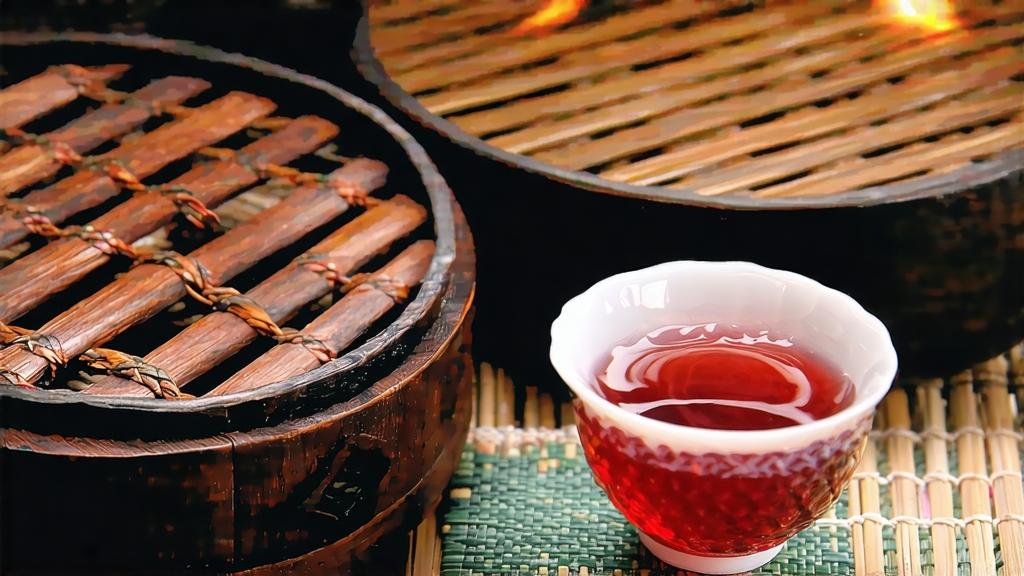
Long before Assam, Ceylon or Earl Grey entered the English lexicon, the first sip of what Europe would call “black tea” was carried out of the mist-wrapped Wuyi Shan in northern Fujian. That tea was Lapsang Souchong, a name that still crackles with campfire memory in every Chinese tea master’s mind. Today, when sommeliers speak of terroir-driven reds, they borrow vocabulary once coined for this rugged Chinese leaf: notes of pine resin, dried longan, cacao and a whisper of mountain orchid. Yet outside the tea guilds, Lapsang is often dismissed as merely “smoked tea,” its deeper story buried under a perfumed veil. This article invites the global drinker to look beyond the smoke, tracing the cultivar’s 400-year journey from Ming-dynasty hinterland to Victorian drawing rooms, and finally to the third-wave cafés where it is now re-imagined as a single-origin craft tea.
-
Historical roots: accident, war and the birth of “red” tea
Local legend places the origin in 1646, when Qing troops passed through Tongmu village and delayed the usual green-tea drying. To save the harvest, farmers rushed the leaves over open pine fires, inadvertently oxidizing them fully and fixing a sweet, resinous aroma. Whatever the truth, court records show that by 1650 this “hong cha” (red tea) was bartered through the Dutch East India Company as “bohea,” a corruption of “Wuyi.” Because the leaf tolerated months at sea better than green teas, Lapsang became the template for every later black tea, from Keemun to Darjeeling. By the 1840s, Tongmu alone exported 6,000 tons yearly; Queen Victoria reportedly drank it with Scottish heather honey, sealing its romantic aura in the West. -
Micro-terroir: why only Tongmu can claim the name
Authentic Lapsang Souchong comes from a 50 km² national-park enclave inside the Wuyi Biosphere Reserve. The canyon traps humid monsoon clouds against granite cliffs, creating a perpetual mist that slows photosynthesis and concentrates amino acids. Soil is highly leached, acidic, rich in quartz and manganese—minerals that translate into a cooling, menthol finish in the cup. Only six hamlets—Tongmu, Guanfeng, Miaowan, Jiangdun, Caixia and Pingzhang—may legally sell their leaf under the protected geographical indication (PGI) granted by China in 2002. Outside this radius, even identical pine-smoking yields a harsher, tar-heavy liquor that Chinese traders bluntly label “fake smoke.” -
Cultivars: from pine-smoke to unsmoked “wild” versions
Purists recognize three ascending grades, all picked from the small-leaf “cai cha” group rather than the larger Da Bai Hao used for white teas.
• Traditional Smoke: Tongmu pine (Pinus massoniana) is felled, split and resin-cured for two years; embers never flame, only smolder beneath bamboo trays of oxidized leaf. The tea absorbs volatiles for 6–8 hours, rests 48 hours, then repeats the cycle up to three times.
• Light Smoke (Xiao Zhong): same leaf, but only one short fumigation, allowing honey-like aromatics to dominate.
• Unsmoked “Wild” Zheng Shan Xiao Zhong: harvested from 200-year-old seed-propagated bushes above 1,200 m, withered over lychee-wood charcoal but never smoked, then stone-pressed into 100 g cakes for aging. The resulting liquor is burgundy-velvet, tasting of dried apricot, sandalwood and alpine peat—closer to a fine Burgundy than to any stereotype of smoked tea. -
Crafting the leaf: an eight-step choreography
Pluck: one tender bud plus two leaves, 5–8 mm stem left intact for even oxidation.
Wither: 18–22 h on bamboo racks inside a pine-heated loft at 28 °C; moisture drops from 75 % to 42 %.
Roll: 55 min machine-rolling at 70 rpm to rupture 85 % of cell walls without shredding the leaf.
Oxidize: spread 3 cm